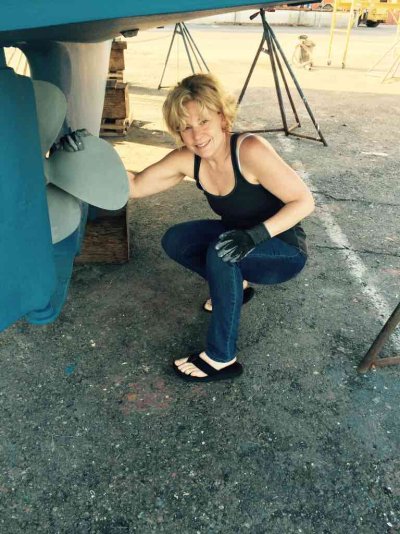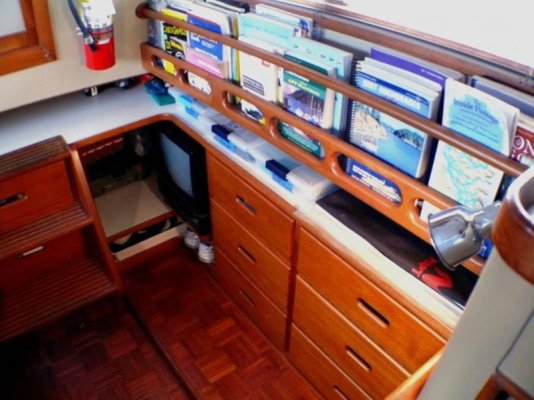DCatSea
Member
I'm toying with the idea of replacing the OEM 3-blade prop on our Albin 27FC with a 4 blade prop. We have the Peugeot Lehman 4D61 engine, and I would be amazed, nay concerned, if we exceeded 9 knots, so speed is not a deciding factor.
We intend some longer cruising in Spring pf 2016, and I am wondering if a 4-blader would be smoother, less "revvy" and hence quieter than a 3-blader, for normal cruising, and if there would any effects on fuel consumption, SOG, handling at lower speeds and issues when running close to WOT (etc.)
Also: "Mazboot" is a 1984 27FC without a skeg under the prop. Has anyone retrofitted one of these? If so, any tips on best ways to do it would be welcomed. (Going to do some gunk-holing in the Bay, and would like the protection a skeg provides.)
If you have experience with these 2 modifications I would love to hear from you.
We intend some longer cruising in Spring pf 2016, and I am wondering if a 4-blader would be smoother, less "revvy" and hence quieter than a 3-blader, for normal cruising, and if there would any effects on fuel consumption, SOG, handling at lower speeds and issues when running close to WOT (etc.)
Also: "Mazboot" is a 1984 27FC without a skeg under the prop. Has anyone retrofitted one of these? If so, any tips on best ways to do it would be welcomed. (Going to do some gunk-holing in the Bay, and would like the protection a skeg provides.)
If you have experience with these 2 modifications I would love to hear from you.




